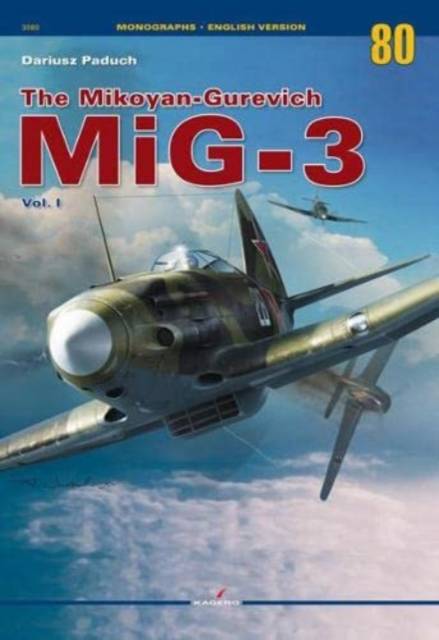
- Afhalen na 1 uur in een winkel met voorraad
- Gratis thuislevering in België vanaf € 30
- Ruim aanbod met 7 miljoen producten
- Afhalen na 1 uur in een winkel met voorraad
- Gratis thuislevering in België vanaf € 30
- Ruim aanbod met 7 miljoen producten
Zoeken
€ 35,95
+ 71 punten
Omschrijving
The MiG-3 fighter plane, like the history of the creation of the Mikoyan and Gurevich (Микоян и Гуревич) design bureau, is relatively well known to anyone interested in the history of Soviet aviation. Many books and articles have been published about this machine, but information about the circumstances of the birth of the project and the conditions of its creation are very brief and concise. MiG-1 and MiG-3 were the most numerous new generation fighters in Soviet aviation at the time of the German invasion of the USSR. They played a very important role in the first period of the war. Until now, it has been assumed in the literature that this applies mainly to the use of these aircraft during the battle of Moscow, as well as capital's and Leningrad's air defense, but MiGs also took on a large weight of air combat at the front in 1941.
Specificaties
Betrokkenen
- Auteur(s):
- Uitgeverij:
Inhoud
- Aantal bladzijden:
- 72
- Taal:
- Engels
- Reeks:
Eigenschappen
- Productcode (EAN):
- 9788366673717
- Verschijningsdatum:
- 24/02/2022
- Uitvoering:
- Paperback
- Formaat:
- Trade paperback (VS)
- Afmetingen:
- 211 mm x 297 mm
- Gewicht:
- 324 g

Alleen bij Standaard Boekhandel
+ 71 punten op je klantenkaart van Standaard Boekhandel
Beoordelingen
We publiceren alleen reviews die voldoen aan de voorwaarden voor reviews. Bekijk onze voorwaarden voor reviews.











